博文
Introduction to NetCDF
|||
See originals: https://www.unidata.ucar.edu/presentations/Rew/rew-egu.pdf
https://www.youtube.com/watch?v=CZGV05i8K14&t=459s
http://www.unidata.ucar.edu/software/netcdf/docs/index.html
other introduction: http://malagis.com/netcdf-overview.html
What is NetCDF?
- a format that is widely used in geoscience education and reseach community.
- developed and supported by Unidata, part of the University Corporation for Atmospheric Research (UCAR).- a self-describing, machine-independent data formats, which makes it very flexible.
- contains a set of software libraries for the creation, access and sharing of array-oriented scientific data.
Data Models of NetCDF: Classical and Enhanced Data Model.
Data: multi-dimentional arrays of data
Classic Data Model:
- variables, dimensions and attributes.
- data type can be 1 of 6: char, byte, short, int, float, double
Enhanced (or: Commen) Data Model:
- contains the same features of the classic data model;
- adds multiple groups and user-defined data types, each group has its own variables, dimensions and attributes;
- the new feature are used with NetCDF-4/HDF5
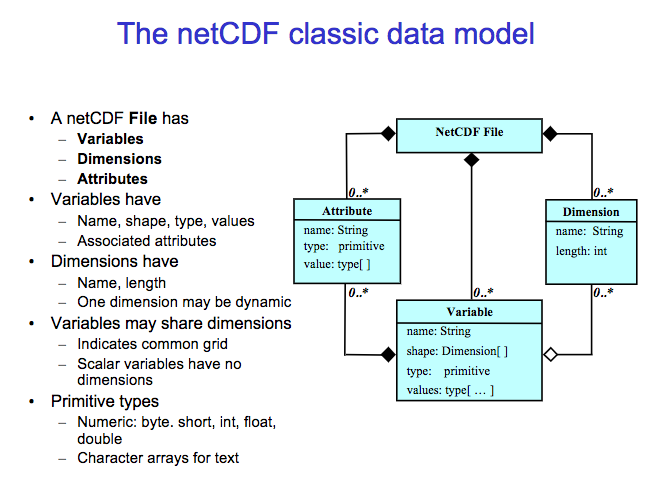
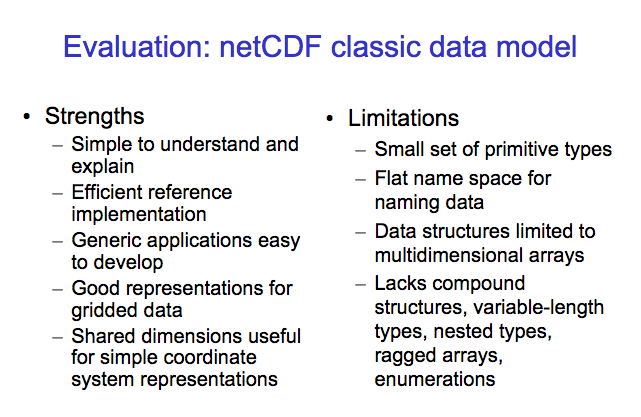
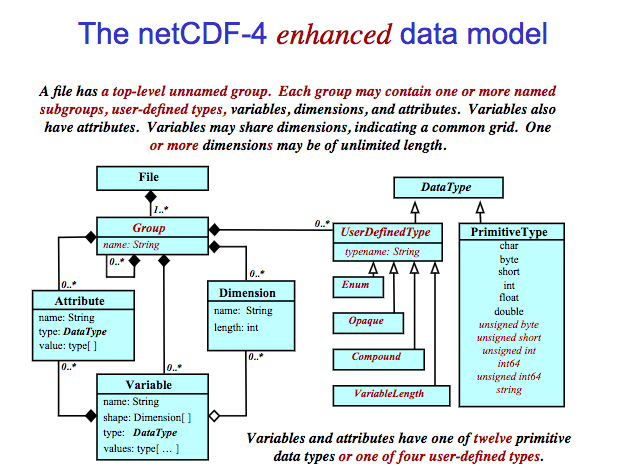
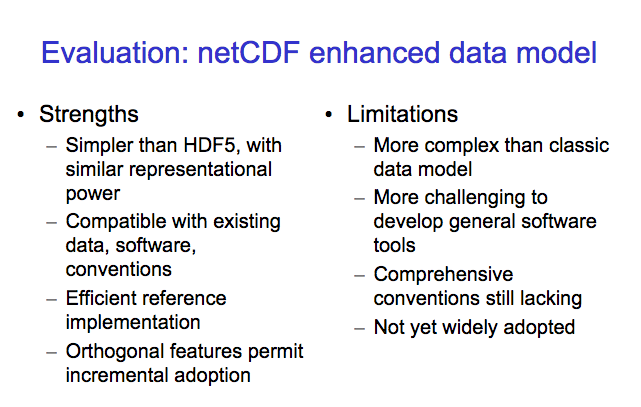
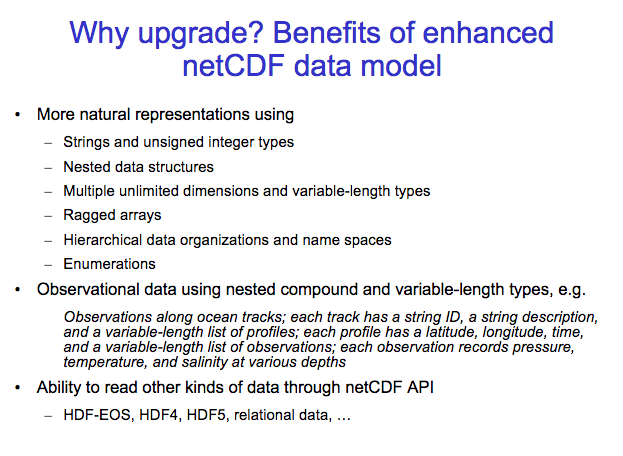
Application program interface (API) is a set of routines, protocols, and tools for building software applications. An API specifies how software components should interact. Additionally, APIs are used when programming graphical user interface (GUI) components.
NetCDF Tools:
Command:
- ncdump
- show metadata
- NetCDF file (binary) -> CDL file (text)
- ncgen
CDL file (text) -> NetCDF file (binary)
Viewer:
- Panoply http://www.giss.nasa.gov/tools/panoply/
- Integrated Data Viewer (IDV) http://www.unidata.ucar.edu/software/idv/
- ncview http://meteora.ucsd.edu/~pierce/ncview_home_page.html
https://wap.sciencenet.cn/blog-3031432-1021849.html
上一篇:RS: algorithm description for NASA ocean color products
下一篇:Matlab: 自动批量修改mat文件的变量名称